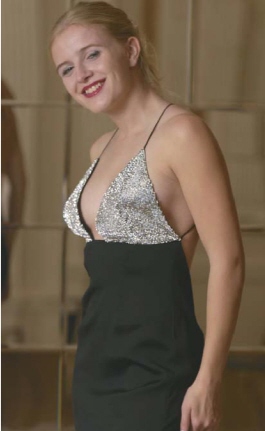
Zebra
Challenging
A is a rare or unusual fabric. Zebras can be divided into a variety of groups: fabrics which reflect new technology, unique fabrics which are not readily available, unusual fabrics which have limited use, specialty fabrics which interest only a few home sewers, any fabric or material which you have never sewn.
Fabrics which incorporate new technology include new fibers, unusual fabric construction, or a different finish. For example, familiar fabrics such as Ultrasuede®, microfibers, Polarfleece®, Slinky, and Tencel® were zebras not so long ago. Today, they are readily available and you have probably sewn on them.
Some unique fabrics which are not readily available or which have limited appeal to the home sewing market include Lu-minex ®, rhinestone mesh, Kevlar®, Sunbrella®, Cordura®, and Tyvek®.
Fabrics which you have never sewn can include traditional favorites such as dotted swiss and marquisette as well as new special occasion fabrics, new fabrications for microfibers and lyocell, and other interesting materials such as chalkboard fabric.
While writing this book, I went to the trade shows—semi-annual events for fabric store buyers to see and purchase new fabrics. At one show, there was an incredible selection of unusual embellished special occasion fabrics—which are not covered in this book—so I immediately began thinking about how to sew them successfully. Here are some hints for sewing them or any other zebra.
Analyzing a zebra
Begin by analyzing the fabric. Most zebras have some characteristics which are similar to fabrics which you have sewn before.
Describe the fabric. What are its characteristics?
Is it a woven, knit, or Nonwoven? What kind of weave or knit does it have? Is it densely or loosely woven or knitted?
Does it have a nap or one-way design?
Does it have a border design, pattern, or weave which requires a layout on the crossgrain?
Is it a natural fiber such as cotton, linen, hemp, silk, wool, cashmere, mohair? Or a manufactured fiber such as rayon, lyocell, acetate, acrylic, nylon, polyester, spandex?
Does it stretch in the width, length, or both?
Is it soft or crisp? Lightweight or heavy? Thin or bulky?
Does it ravel? Do the yarns separate when you scrape your nail across the fabric?
Does it wrinkle? Waterspot? Is it absorbent?
Will it require an underlining for stability or body, support or shaping, modesty, comfort, or color?
Can it be cleaned? What are the recommendations for cleaning?
Are designers in the apparel industry using it? How?
What type garments?
Describe some ready-to-wear designs you have seen and the details on them?
Identify any similar fabrics. How are they similar?
Is it similar to a fabric described in Sew Any Fabric?
What happens when you burn it? See the Burn Test .
What are its disadvantages? How will they affect the design?
What are its advantages? How can you utilize them?
One of the fabrics I saw at the trade show was a fabulous embroidered chiffon with a beaded design along one edge. It had a border design and incorporated many of the characteristics of chiffon, embroidered, and beaded fabrics. When considered as a whole, this fabric would be challenging; but, when the project is divided into many small steps, it is easier to manage. Yes, it’s just like eating an apple—one bite at a time.

Designer Carol Lambeth used pliers and a seam ripper to “cut”the mesh fabric; then she sewed it together by hand. (Photo courtesy of Carol Lambeth Couture.)
Challenging
Sewing a zebra
If the zebra is similar to fabrics which you have sewn before, apply what you learned from those experiences. Make some samples on the new fabric using techniques which have proven successful in the past.
When making seam samples, make them about 20" (50cm) long. Hang them vertically and stand back at least 5 feet (1.5m).
If the fabric is unlike any you have sewn previously, look for similar fabrics in Sew Any Fabric and experiment with the recommended techniques. If there are no similar fabrics, keep it simple and plunge ahead.
Occasionally, when there are no similar fabrics, you must think creatively. For the rhinestone mesh bodice shown at right, Carol Lambeth used pliers and a seam ripper to “cut” the fabric; then she sewed the mesh together by hand.
Hints for Sewing a Zebra
1. Analyze the fabric.
2. Identify the fiber(s), construction, advantages, disadvantages. 3. Identify similar fabrics.
4. Make samples, using what you know about similar fabrics.
5. Test press.
6. Talk to the fabric and listen to what it’s telling you.
7. Select a simple design to showcase the fabric.

Breathtakingly luxurious, the metallic lace bodice trimmed with lamé is paired with a silk satin skirt. (Photo courtesy of Ptakcouture.com.)

Designed by Carol Lambeth, this stunning gown features a rhinestone mesh bodice and four-ply silk skirt. (Photo courtesy of Carol Lambeth Couture.)
In Conclusion
From the beginning, this book has focused on basic, quality techniques, how they are applied to today’s most popular fabrics, and how you can apply what you already know to sew any fabric successfully.
There will always be zebras and new fabrics to inspire, excite, and delight us. Some fabrics will be more challenging than others; but, with the knowledge you have acquired in the past, you can meet these challenges and unravel their secrets to sew any fabric successfully.